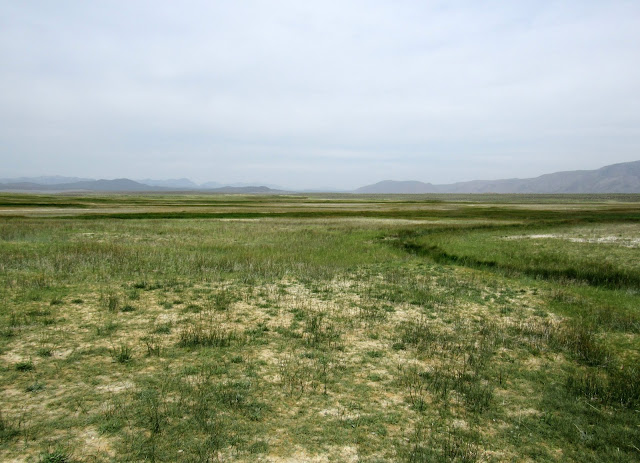Foray into Geology : The Long Valley Caldera
*Disclaimer
: I am not a geologist; I don’t have a geology degree, I never majored or
minored in geology. I've taken exactly
one college geology class, and I've read three books on geology - four, if you
want to count the one I read twice. (More
on those gems in another post, no pun intended.) But I'm learning. And since California is such a geologically
rich place, it's the perfect learning ground. Therefore,
what you read here is just that : a glimpse into a learning process, as I study
and read and glean information from my travels to sites of geologic
significance, then share my findings with you.
Please correct me if anything is amiss!
During the
summer of 2015, my husband and I spent a week in the Mammoth Lakes area, on the
breathtaking eastern side of the Sierra Nevada.
The cabin where we stayed was perched on the edge of the Long Valley
Caldera, below Mammoth Mountain, in the Lakes Basin region of Mammoth Lakes. (I had learned, from my one college geology
class, about the Long Valley eruption and the volcanic potential of the region…
and may have down-played these facts to my husband during our trip.)
The entire
week was one fantastic self-guided geology field trip, and will become a series
of posts, the first of which being a look at the Long Valley Caldera.
 |
| On the floor of the Long Valley Caldera, looking toward the northeast rim |
Nearly 10
miles wide and 20 miles long, the Long Valley Caldera was formed approximately
760,000 years ago by a massive volcanic eruption. Geologists estimate that volcanic activity in
the Long Valley region began between three and four million years ago with the
eruption of basalts and andesites.
The chemical
composition of Long Valley lavas changed over time, from low silica or mafic lavas, which are less viscous,
effusive lavas that form basalts and andesites, to lavas with a higher silica
content, or felsic lavas. Felsic lavas produce dacite and ryolite, and
have a higher viscosity which makes them explosive rather than effusive.
 |
| Looking toward the southeast rim of the caldera, with a hot spring in the foreground |
 |
| The floor of the caldera contains a number of springs and creeks filled with water that has been heated by underground magma, attesting to the area's present day volcanic activity. |
By 760,000
years ago, enough ryolitic magma had built up in a magma chamber a mere four
miles beneath the surface to produce a colossal eruption. So great was the pressure that was released, so
high its velocity and so large the volume of ejected material, that tephra and
pyroclastic flow deposits buried an estimated 580 square miles of California
and Nevada. 75 miles from the volcano,
ash covered the ground to a depth of four feet.
125 miles from the volcano, the ash blanket was 16 inches deep. Ash from the Long Valley eruption reached as
far as Nebraska and Kansas, recognizable by geologists even today.
Bishop tuff
is the name given to deposits of ash and pumice produced by the Long Valley
eruption, and numerous examples can be found in the area.
 |
| Photo of a photo display in the Mammoth Lakes Welcome Center, describing Bishop tuff. |
So great was
the amount of magma which erupted from the Long Valley volcano that the roof of
the magma chamber collapsed, causing the ground to subside and create a caldera
one mile in depth. Some of the material from
the eruption fell back into the caldera, and more material has continued to
fill it in the many years since. But
from the center of the present-day Long Valley caldera, the rim of the massive
volcano is still evident, rising up from the caldera floor in every direction.
After the
caldera formed, volcanic activity continued as pressure from rising magma
caused the floor of the caldera to bulge, creating a resurgent dome which is
about 1,600 feet higher than the surrounding caldera floor. Approximately 100,000 years ago, Mammoth
Mountain, along the southwest edge of the Long Valley caldera, began producing
dacite flows (higher viscocity, felsic lavas) at the estimated rate of one
every 5,000 years, for the next 50,000 years.
Geologists
don't expect another massive eruption in the immediate future, but the region
is still volcanically active, and any number of smaller eruptions are possible,
if not likely, near the Long Valley caldera and Mammoth Mountain.
 |
| Mammoth Mountain in the background; a portion of the resurgent dome can be seen at the right, covered in dark vegetation. Hot Creek flows through the foreground. |
 |
| Enjoying beautiful hot springs and stunning views of the eastern Sierra. If you visit, please respect this remarkable place. |








Comments
Post a Comment